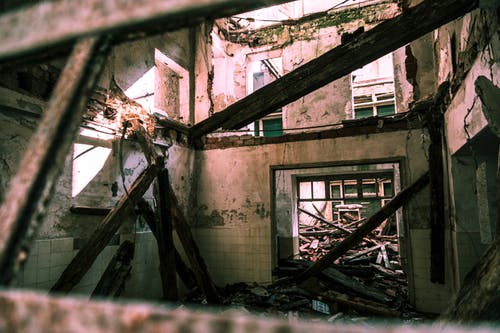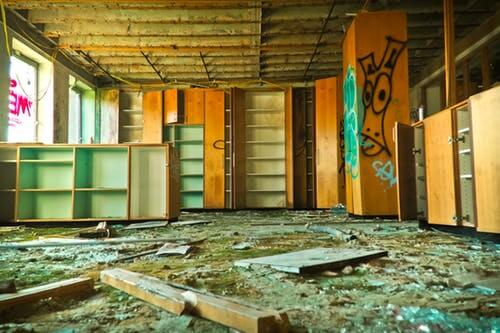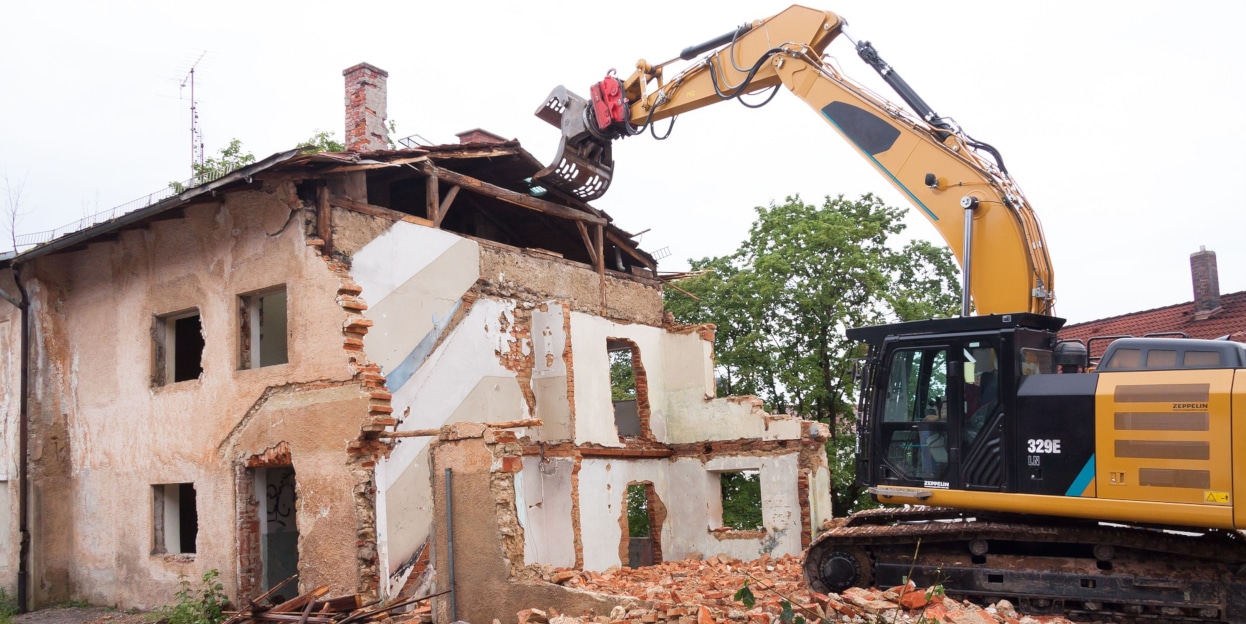Finding the perfect location for your next property can be both a tremendous relief and an overwhelmingly daunting task, and sometimes it may entail demolishing a property to make way for your future dream home or premises.
When the perfect plot of land has been found it is a massive task from purchase to enjoying the final product, but an ideal plot of land may also come with issues such as unsalvageable or unwanted buildings and structures.
More often than not, a certain element of tidying up is necessary in order to pave this blank slate for your next property development, including the demolition of unwanted, unnecessary and sometimes even dangerous and hazardous structures. Also, if the property is left unoccupied for a prolonged period of time, it is worthwhile acquiring empty property insurance to cover you and your property should any damage occur.
Although demolition work can be seen as a seemingly straightforward task, there are multiple aspects of the work to consider and a great deal of planning to ensure a swift, easy, safe and legal demolition. This guide to demolishing a property will take you through the process of this in two main steps: preparation and demolition.
How to Prepare for a Property’s Demolition
The preparation for demolition of a property is the first, and arguably most vital, component of the demolition process, helping to ensure no nasty surprises pop up in delaying the demolition or causing it to be cancelled altogether.
Legal Considerations When Demolishing Property
Taking care of the legal aspects of the property demolition is key and getting permission and the go-ahead from your Local Planning Authority and other necessary bodies means that from the very outset, the formalities are taken care of. Furthermore, make sure the site is properly secured, to prevent travellers, trespassers and vandals from accessing the site, causing issues down the line.

Get all necessary permits and procedures ready in advance, including a skip permit (if the skip is placed on a public road or pavement) and an asbestos inspection well before the demolition date.
Planning Permission – Planning permission is not typically required when demolishing a property classed as ‘Permitted Development’ and therefore protected under the rights of this. There can be issues with this where Permitted Development has been temporarily restricted; this is only when such issues arise as the unsalvageable structure being a listed building or conservation area.
Local Wildlife – If the area of land is in a rural location, the local planning authority may request a wildlife survey. If evidence of endangered life is identified from the survey this could severely delay the demolition process.
Neighbourhood Considerations – If the property you are planning to demolish is not detached, the neighbours of the connecting property have a legal right of support, meaning both the demolition and replacement structure must support and uphold the integrity of the neighbours building.
Hired help – Although it might seem a simple procedure, a demolition crew with experience, although somewhat costly, is a vital part of the process to ensure everything runs in a smooth, productive and time-efficient manner.
Cost of Demolition – In order to make sure there are no delays due to missed payments of the demolition crew etc., it is important to know the exact overall cost for the demolition; typically costing in a range from £6000-£8000 for a small detached property, and often up to a range of £12,000-£15,000 for a more extensive demolition project.
Timescale of Demolition Process – Preparing for the timescale of a demolition project is another key aspect of the process, which effects such a range of factors from the overall cost of demolition to planning on where to stay if this property becomes your only residence before demolition and development.
Security – Making sure the land which the property to be demolished is on is secure is crucial. Securing unoccupied land ensures no unauthorised intruders enter the land or the premises. Should anyone unauthorised enter the land in any capacity, it could disrupt the demolition process whilst you fight to remove them.
Neighbours – As well as the laws protecting neighbours with adjoining houses, another factor to consider in demolition is the issue of noise and mess your neighbours will have to put up with. Perhaps trying to make nice by popping round with a bottle of wine before the demolition as a pre-emptive apology may ease the complaints through the process.

What is Involved in Demolishing a Property?
Knowing the process of what is involved in the literal demolition of a property will help in the ease of this process, reducing confusion and stress over the unknown aspects to the process. Knowledge of this will also make sure that little comes as a surprise to you when the process is
actually underway.
The Demolition Process
The actual process of demolition can be summed up in the following stages:
- Cut off all services to the building, such as the telephone, electricity, gas, main water and sewer connection (more information about decommissioning utilities)
- Place site fencing and, if needed, scaffolding around the property
- Check hazards such as asbestos are completely removed from the property
- ‘Soft strip’ of all items that can be removed without heavy machinery, e.g. cabling, plumbing etc. whilst removing all doors, windows and linings from the property
- Strip the roof and remove any lead flashings
- Remove all fundamental structures of the property, including trusses and joists
- Demolition of walls and general destruction of foundations to the property
Considering these fundamental aspects of the process to demolishing a property will help to ensure an overall smoother demolition process, and more time-efficient stepping-stone to your next property development.

